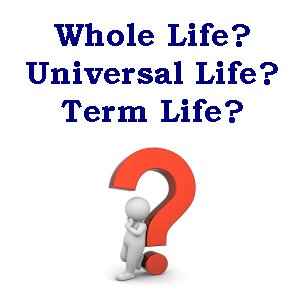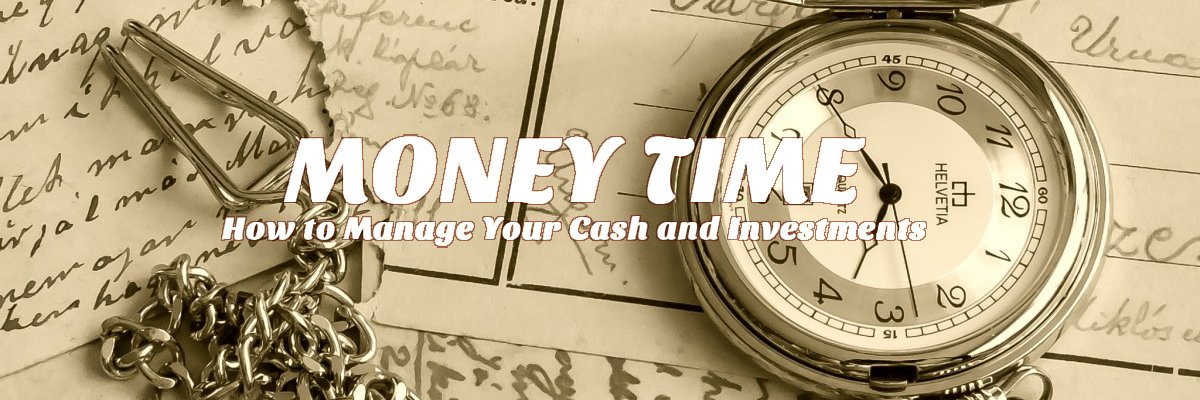 There are three basic types of life insurance plans available to US citizens and residents: Whole Life Insurance, Universal Life Insurance, and Term Life Insurance.
There are three basic types of life insurance plans available to US citizens and residents: Whole Life Insurance, Universal Life Insurance, and Term Life Insurance.
Each type of insurance is designed to work best at certain periods of your life. Both Whole Life and Universal Life are designed to be “purchase once” insurance plans. Term Life Insurance is designed to be renewed on a periodic basis (10 years, 20 years, or 30 years).
The idea behind life insurance is to protect your family or other heirs from incurring huge losses due to your unexpected death. For example, life insurance should be enough to cover the costs of your funeral and associated expenses.
But many homeowners and business owners may leave their heirs in debt if they do not have enough life insurance to pay off mortgages and business loans. And while you may not be able to pay for all the debts you leave behind, the rule of thumb is that you should carry enough life insurance to replace about five years’ worth of income.
Hence, if you earn $50,000 a year then carrying $250,000′ worth of life insurance is recommended. But let’s take a closer look at when it’s best to buy each type of life insurance.
Whole Life Insurance: Buy This for Babies and Children
Whole Life Insurance is a great investment in your children’s future because it guarantees them a low premium for at least part of their life insurance for the entire lives (unless they cancel or cash in their policies). You can begin buying Whole Life Insurance policies for children at age 1. These policies are owned by whomever takes them out until the children reach an age of maturity (usually 21-23 years), at which time they have the choice of allowing the policies to lapse or to take ownership of them.
Although you cannot purchase a $1 million life insurance policy on a 1-year-old you may be able to purchase up to $100,000′ worth of insurance on a relatively inexpensive Whole Life Plan. Limits may more commonly be set as low as $50,000. After all, a 1-year-old is not expected to have any debts and so doesn’t need to cover many expenses upon dying (although the settlement can be used to pay off medical debt from a long illness).
Besides the life-long low premium, Whole Life Insurance allows you to pay extra premiums that are added to an accumulation account. These accumulation accounts rarely offer as much growth as buying a common stock market index fund, but they do provide some financial advantages. For example, the accumulation account balance earns interest at a guaranteed rate (set at the time the policy is taken out) plus maybe an additional rate if market interest rates warrant that.
The insurance company will make more money on the accumulation account balance than you but this can still be a great way to build up cash value if you buy the Whole Life Policy when prime interest rates are high. The last time such interest rates were high enough to make a Whole Life Policy a good deal was in the early 1980s, so this kind of opportunity doesn’t come along very often.
One other advantage of building up an accumulation account is that the policy owner can borrow against that balance at any time without a credit check. The interest paid on the loan is added back into the accumulation account. So this is a good way to provide your children with some future financial reserves that won’t be subjected to taxation (unless tax laws are changed).
If you invest $100 a month in a stock index fund for 18 years, you or whomever you open the fund for will have to pay taxes on all capital gains. If you pay $100 premium a month on a Whole Life Policy for 18 years, the cash value of the policy won’t be anywhere near as much as the cash value of the equivalent stock index fund but you won’t have to pay any taxes if you borrow against the policy (you may have to pay taxes if you cash out the policy, though).
Whole Life Policies are great foundations for children’s financial futures.
Universal Life Insurance: Buy This for Young Adults In Their 20s and 30s
One of the sad things about Whole Life Insurance is that the base premium rates increase each year that you get older. In other words, it is more expensive to buy a $50,000 Whole Life Policy for a 5-year-old than for a 1-year-old, and more expensive to buy a Whole Life Policy for an 18-year-old than for a 5-year-old.
However, when you finally reach the age where Whole Life premiums are too expensive you can still buy a Universal Life Policy. The premiums for these policies are lower and more flexible than Whole Life Policies. Like a Whole Life Policy, a Universal Life Policy comes with an accumulation account where any extra premium you pay over the base cost of the insurance is deposited and earns interest.
The chief difference between a Universal Life Policy and a Whole Life Policy is that the base cost of the Universal Life Policy is recomputed each year, so it rises gradually. Typically you start out paying a higher premium than necessary and build up an accumulation account. As you grow older the insurance cost catches up to and overtakes the premium and starts to draw down the accumulation account.
Of course, you can increase your premiums at any time, but you want to manage your monthly expenses. It doesn’t make sense to invest hundreds of dollars a month in Universal Life Premiums when you are over 45; instead, that money can be invested in stock index funds that should increase in value over the next 10-20 years.
Universal Life Policies also differ from Whole Life Policies in another way. The Universal Life Policy usually has a much higher limit on the amount of insurance you can buy. So if you need $500,000 insurance coverage a Universal Life Policy is a better choice than a Whole Life Policy.
Universal Life premiums are usually more stable and less expensive than Term Life premiums, provided you buy into the Universal Life Policy by or before age 35, which is considered to be about the “break-even point” between Universal and Term Life plans.
Buy Term Life Insurance For People in Their 40s and Beyond
Homeowners often buy Term Life Insurance that has a period about equal to their mortgage. So if you take out a 30-year mortgage and a 30-year Term Life Policy you’ll be locked into the same premium for those 30 years. This is a great way to ensure that your home is paid off if you die too soon; and most lenders now require homeowners to take out life insurance anyway.
But here is the problem with Term Life: when you have to buy a new policy every 5-10 years, the premiums become more and more expensive. If you sell your house, move away, and buy a new house the chances are good that you’ll have to get a new Term Life policy for that mortgage. This situation may vary from lender to lender; you should ask if you can roll your Term Life Policy for your old mortgage into your new mortgage. If you are allowed to do this that will help you keep your premiums low.
Otherwise, buying Term Life Insurance every time you buy a new house becomes increasingly expensive.
Term Life Insurance is designed to provide you with coverage for large expenses and debts during your most productive years. The idea is that you’ll have paid off your mortgage by the time the Term Life Policy expires, and therefore you won’t need as much insurance as you once did.
If you accrue other debts or medical expenses as you grow older then buying Term Life Insurance becomes too expensive to maintain appropriate coverage. Even if you find offers to buy “cheap” Term Life Insurance through group plans, the limits may be set too low. Group polices rarely allow you to buy more than $50,000 to $100,000 in cheap Term Life coverage. Do not count on being able to find affordable Term Life Insurance as you approach retirement age or beyond. It simply won’t be there, except in amounts sufficient to pay for funerals and a few other small expenses.
Investment Strategists Often Mislead People About Insurance
When you talk with financial counselors, especially those who earn their money from commissions they make on selling you stocks, bonds, and annuities, you’ll often hear that buying life insurance is “a bad investment”. The truth is more complicated than that. Life insurance is a great investment when you buy it for the right reasons and in the right amounts.
Do not ignore the accumulation accounts that Whole Life and Universal Life policies provide you. Comparing their projected growth rates to the projected growth rates for stock funds is a serious mistake because you cannot depend on the stock market to pay off your debts when you die. That is what insurance is designed to do.
Manage your retirement investments wisely so that you can enjoy life as you grow older, but manage your insurance plans accordingly. You are not supposed to touch your insurance policies but when disaster strikes it will be better to borrow against a well-funded insurance accumulation account than to sell off your stocks at a time that the market is not doing well.
No matter how sound and reasonable people may seem to be, if they are trying to talk you out of buying Whole Life or Universal Life Insurance, remember that they cannot give you back the years (the and the discounts on insurance premiums) that they cost you with their ill-reasoned arguments. Nor can they guarantee that the stock market will provide the returns you need WHEN you need them.
